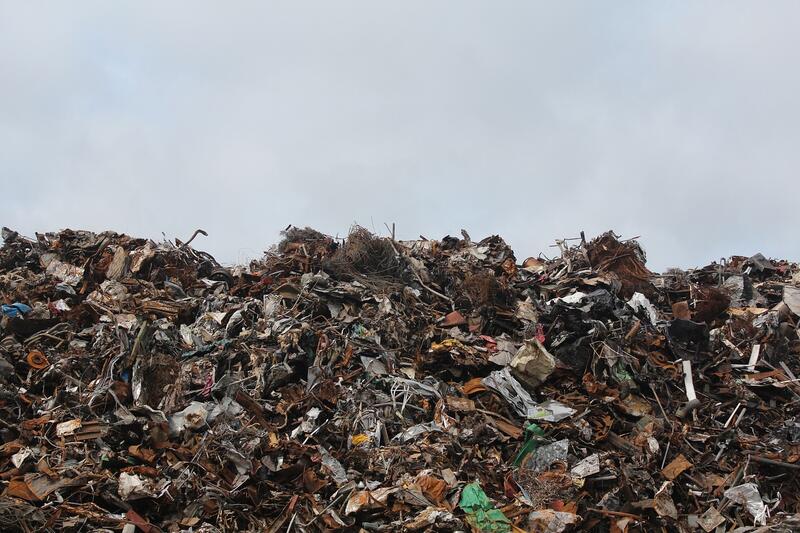Addressing Carbon Footprints: Decarbonizing Collection of non-hazardous waste Solutions
This article explores the importance of reducing carbon footprints in waste management and offers solutions for decarbonizing the collection of non-hazardous waste.

Decarbonisation is the process of reducing or eliminating carbon emissions from various sectors of the economy. The collection of non-hazardous waste is one of the sectors that contribute significantly to carbon emissions. The sector is responsible for collecting, transporting, and disposing of waste generated by households, businesses, and industries. Decarbonisation in the collection of non-hazardous waste sector is important because it helps to reduce the impact of waste management on the environment and human health. This article will discuss the sources of carbon emissions in the collection of non-hazardous waste sector, ways to reduce carbon emissions, challenges facing decarbonisation, and the implications of decarbonisation for the sector.
What is Decarbonisation in the Collection of Non-Hazardous Waste Sector and Why is it Important?
Decarbonisation in the collection of non-hazardous waste sector refers to the process of reducing or eliminating carbon emissions associated with waste management activities. Waste management activities such as collection, transportation, and disposal of waste generate carbon emissions through the use of fossil fuels, such as diesel and gasoline, in waste collection vehicles. Decarbonisation is important because it helps to reduce the impact of waste management on the environment and human health. Carbon emissions contribute to climate change, which has adverse effects on the environment, such as rising sea levels, extreme weather events, and loss of biodiversity. Decarbonisation also helps to reduce air pollution, which is a major health hazard in many urban areas.
What are the Main Sources of Carbon Emissions in the Collection of Non-Hazardous Waste Sector?
The main sources of carbon emissions in the collection of non-hazardous waste sector are waste collection vehicles and landfill gas. Waste collection vehicles emit carbon dioxide (CO2), nitrogen oxides (NOx), and particulate matter (PM) during the collection and transportation of waste. Landfill gas is generated by the decomposition of organic waste in landfills and consists of methane (CH4) and CO2. Methane is a potent greenhouse gas that has a global warming potential 28 times higher than CO2 over a 100-year time horizon.
How Can We Reduce Carbon Emissions in the Collection of Non-Hazardous Waste Sector?
There are several ways to reduce carbon emissions in the collection of non-hazardous waste sector, including:
- Use of low-emission vehicles: The use of low-emission vehicles, such as electric or hybrid vehicles, can significantly reduce carbon emissions from waste collection. These vehicles have lower emissions of CO2, NOx, and PM compared to conventional diesel or gasoline vehicles.
- Use of alternative fuels: The use of alternative fuels, such as biodiesel, compressed natural gas (CNG), or liquefied natural gas (LNG), can also reduce carbon emissions from waste collection vehicles. These fuels have lower emissions of CO2 and NOx compared to diesel or gasoline.
- Landfill gas capture: Landfill gas can be captured and used as a source of renewable energy. Methane can be converted into electricity or heat, reducing the need for fossil fuels.
- Waste reduction and recycling: Reducing the amount of waste generated and increasing recycling can also reduce carbon emissions from waste management. Recycling reduces the need for new materials, which require energy to produce, and reduces the amount of waste sent to landfills.
What are the Challenges Facing Decarbonisation in the Collection of Non-Hazardous Waste Sector?
There are several challenges facing decarbonisation in the collection of non-hazardous waste sector, including:
- High capital costs: The cost of purchasing low-emission vehicles or retrofitting existing vehicles with alternative fuel systems can be high, making it difficult for waste management companies to invest in these technologies.
- Limited infrastructure: The availability of alternative fuel infrastructure, such as CNG or LNG refuelling stations, can be limited in some areas, making it difficult for waste management companies to switch to these fuels.
- Technical challenges: The use of alternative fuels or low-emission vehicles can present technical challenges, such as the need for specialised maintenance or training for drivers.
- Regulatory barriers: Regulations or policies that favour conventional diesel or gasoline vehicles can create barriers to the adoption of low-emission vehicles or alternative fuels.
What are the Implications of Decarbonisation for the Collection of Non-Hazardous Waste Sector?
Decarbonisation has several implications for the collection of non-hazardous waste sector, including:
- Improved environmental performance: Decarbonisation can help to improve the environmental performance of waste management activities by reducing carbon emissions and air pollution.
- Increased operational efficiency: The use of low-emission vehicles or alternative fuels can also improve operational efficiency by reducing fuel costs and maintenance requirements.
- New business opportunities: Decarbonisation can create new business opportunities for waste management companies, such as the provision of renewable energy from landfill gas or the development of recycling infrastructure.
- Regulatory compliance: Decarbonisation can help waste management companies to comply with regulations or policies aimed at reducing carbon emissions or air pollution.
Conclusion
Decarbonisation in the collection of non-hazardous waste sector is important for reducing the impact of waste management on the environment and human health. The main sources of carbon emissions in the sector are waste collection vehicles and landfill gas. There are several ways to reduce carbon emissions, including the use of low-emission vehicles, alternative fuels, landfill gas capture, and waste reduction and recycling. However, there are also several challenges facing decarbonisation, such as high capital costs, limited infrastructure, technical challenges, and regulatory barriers. Decarbonisation has several implications for the sector, including improved environmental performance, increased operational efficiency, new business opportunities, and regulatory compliance.